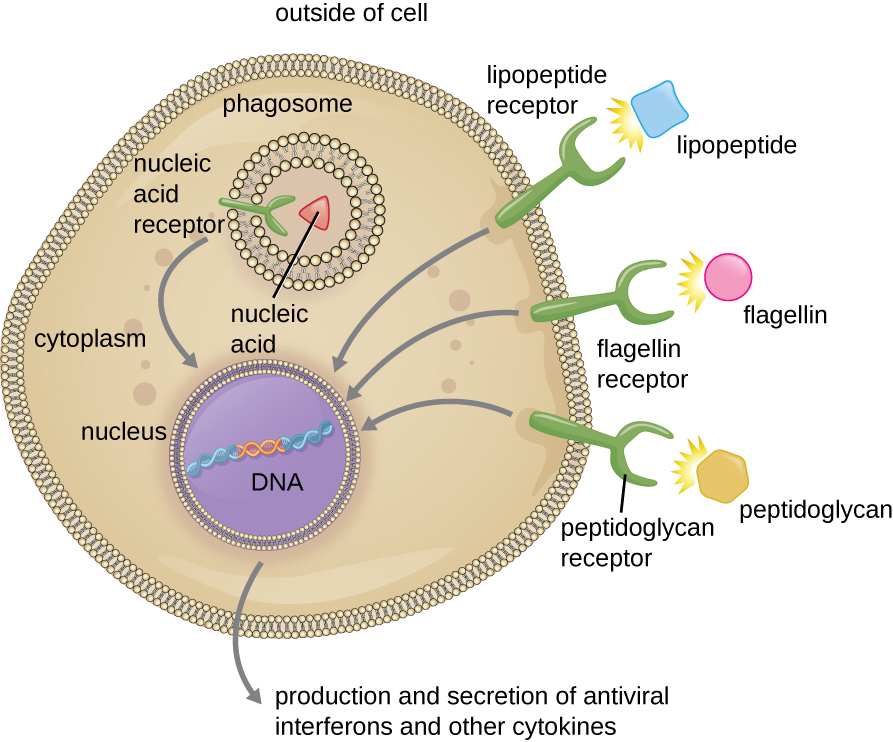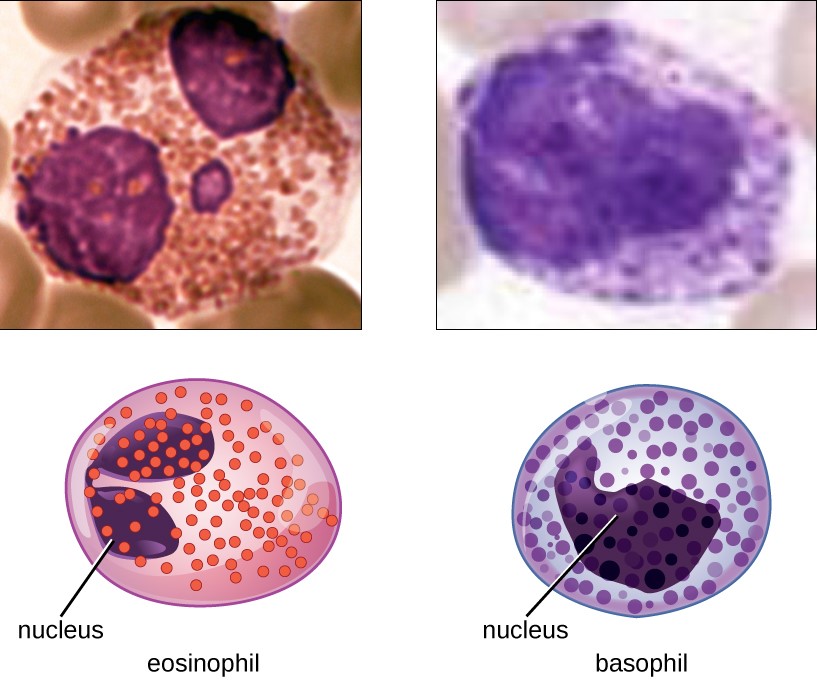Playlist
Show Playlist
Hide Playlist
Introduction: The Innate Immune Response
-
03-01 Slides Innate Immune System Intro.pdf
-
Download Lecture Overview
00:01 You’re going to be looking at the Innate Immune Response in this lecture. 00:06 In another lecture, you’ll look at the Adaptive Immune Response. 00:10 It’s very important to appreciate that these two types of immune response, the innate and the adaptive actually work together. 00:18 They’re fully integrated types of responses, not two entirely separate responses. 00:24 However, there are two features that distinguish innate and adaptive response. 00:32 Firstly, innate responses are broadly specific. 00:37 They don’t recognize single antigens in a very highly specific way, which is a feature of the adaptive response. 00:46 And secondly, innate immune responses do not exhibit the long-term adaptive immunological memory of the type shown by T and B lymphocytes which generates the stronger and faster secondary immune response. 01:05 Note, however, that innate responses can under certain circumstances be enhanced upon re-encounter with pathogens - a phenomenon known as trained innate immunity. 01:19 So we’re going to focus on the innate immune response but remember that this doesn’t act in isolation. 01:26 It acts together with the adaptive response. 01:29 Let us look at the events occurring during the innate response. 01:33 Initially there needs to be recognition of a threat. 01:36 The immune system needs to know that there’s an infection or a toxin or tissue damage that it needs to respond to. 01:44 There needs to be activation of innate immune cells and of some molecules that collectively are called the complement system. 01:54 There also needs to be the production of other molecules called cytokines, chemokines, acute phase proteins and defensins. Also, upregulation of cell adhesion molecules is required, as is the recruitment of cells to the site of infection or tissue damage. Having detected a threat and beginning to make a response, then obviously, there needs to be elimination of the threat. 02:27 In other words, elimination of the stimulus to the response. 02:32 Following elimination of the threat, there needs to be resolution of the response and tissue repair of any damage that has occurred as part of the immune response.
About the Lecture
The lecture Introduction: The Innate Immune Response by Peter Delves, PhD is from the course Innate Immune System.
Included Quiz Questions
Which of the following statements regarding the innate and adaptive immune responses is most accurate?
- The innate and adaptive immune responses are integrated responses.
- The innate and adaptive immune responses are completely separate responses.
- The innate immune response is a mounting response with the increasing number of exposures.
- The adaptive immune response mainly involves macrophages and natural killer cells.
Which of the following results from immunological memory?
- A stronger response to a second encounter with the same pathogen
- The ability to recognize a different antigen for the first time
- A similar immune response regardless of the number of exposures
- Activation of the complement system by the innate immune system
- Production of cytokines and chemokines upon encountering a pathogen for the first time
Customer reviews
5,0 of 5 stars
| 5 Stars |
|
5 |
| 4 Stars |
|
0 |
| 3 Stars |
|
0 |
| 2 Stars |
|
0 |
| 1 Star |
|
0 |





